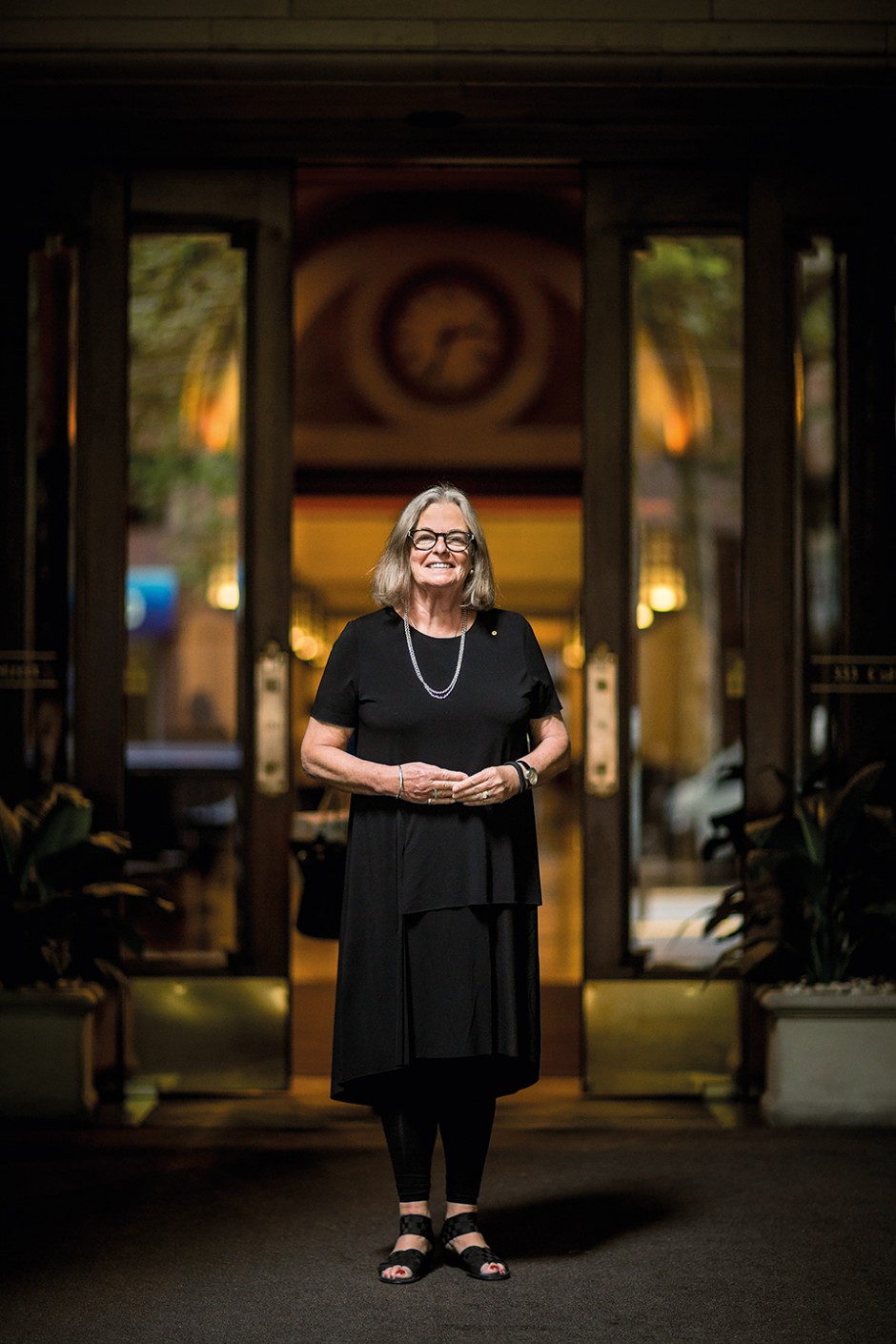Visions splendid
Its alumni have been making their mark on the built environment since 1902 — and now the University’s Faculty of Architecture, Building and Planning is making a bold statement on the Parkville campus with a new home. The state-of-the-art Melbourne School of Design, with a light-filled atrium and open studios that encourage free exchanges between students and teachers, opened in December last year. To celebrate the occasion, Liz Porter profiles some of the faculty’s notable alumni and their stunning work.

Yvonne von Hartel at the entrance of 333 Collins Street.
YVONNE VON HARTEL AM (BArch( H o n s ) 1 9 67, Advanced Management Program 1989)
PRACTICE
peckvonhartel
MAJOR PROJECTS INCLUDE
333 Collins Street, Melbourne: Completed in 1991, the 29-storey tower is clad in ornamented exfoliated granite and topped with a distinctive copper dome.
National Museum of Australia in Canberra (together with Ashton Raggatt McDougall): With exotic, multi-coloured exteriors and a giant sculptural loop at its entrance, the building comprises several spaces jigsawed around a Garden of Australian Dreams.
CAREER AND INFLUENCES
Yvonne von Hartel was 11 when she decided on a career in architecture. Several student jobs turned her off the idea of working with small firms and, on graduation, she applied to the large firm Yuncken Freeman, designers of the Sidney Myer Music Bowl, because it was “the best training ground in Australia”. Working on 140 William Street (the original BHP House), the Austin Hospital and the masterplan for La Trobe University, she acquired a taste for large corporate projects — “the more complicated the better”— that she is still expressing in jobs such as the $3.5 billion Victorian Desalination Plant, which along with ARM Architecture won the Sir Osborn McCutcheon Award for Commercial Architecture in the Australian Institute of Architects’ Victorian Architecture Awards. With her husband and colleague Robert Peck AM (BArch 1968, MBA 1973) she worked on major jobs in Asia between 1974 and 1980. When the Yuncken Freeman partnership was restructured in 1980, its offices in Hong Kong, Jakarta, and Kuala Lumpur were transferred to the couple. They also set up their Melbourne practice, then called Robert Peck von Hartel Trethowan. Von Hartel received an Order of Australia in 2007 for her contributions to urban design, architecture and the promotion of women in business.
MY VIEW ON ARCHITECTURE
Architecture may be defined as the “built environment” but it’s more than that. Architecture is the coming together of clients, specialist designers, communities, authorities and the prevailing physical and economic circumstances under the baton of the architect to produce a resultant built form. Architecture is not the product of a single effort; successful architectural outcomes are typified by successful collaboration by all participants in the process.
BUILDINGS AND ARCHITECTS I ADMIRE
The Old Treasury Building, Melbourne, designed by 19-year-old architect JJ Clark in1862.
The German Pavilion at the 1929 International Exposition in Barcelona, Spain, by Ludwig Mies van der Rohe.
Musée d’art contemporain et la bibliothèque municipale at Nîmes, France, by Norman Foster.
Marseille Vieux Port, France (2011–2013), by Norman Foster.
A UNIVERSITY MEMORY
“Most of all I remember Professor Brian Lewis (DipArch 1928, BArch 1944). He challenged us by providing a cohort of students of varied backgrounds and entry qualifications and urging us to take on more and more, from extra arts subjects and student politics to fundraising for a new school and the Archi Revue.”

The National Museum of Australia.


